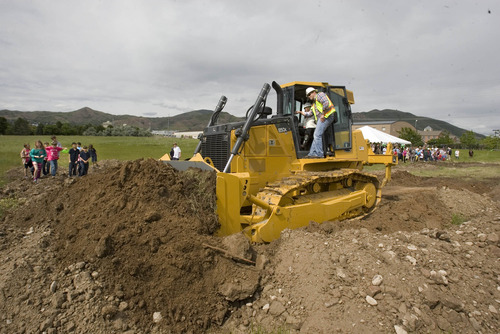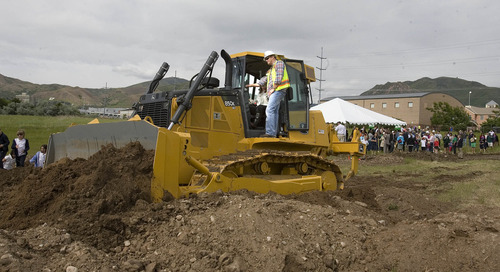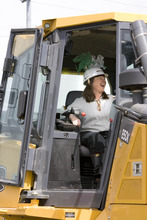This is an archived article that was published on sltrib.com in 2013, and information in the article may be outdated. It is provided only for personal research purposes and may not be reprinted.
Student athletes at private college-preparatory school Rowland Hall are getting their own soccer fields in the first phase of a $75 million school expansion project.
The school broke ground May 29 on new turf fields and a recreation area that will be built on a vacant lot purchased from Mount Olivet Cemetery, an acquisition that required an act of Congress.
Rowland Hall trustees in January signed off on plans to build a new campus for their high school and middle school on the 13-acre former cemetery lot, which borders the school's east-bench elementary school at 720 S. Guardsman Way. School officials plan to first raze the lot and build two turf fields, a parking lot and a garden, among other outdoor areas.
They plan to later sell the 800 South property where the existing middle and high schools are located — about a mile from the elementary school — to help cover the cost of the new school buildings.
School officials are still raising money for the classroom buildings. They expect the recreation area phase to be finished in November.
"It's exciting," said Rowland Hall spokeswoman Susan Koles. "We're happy to at least get started on part of it."
During her two decades at Rowland Hall, Athletic Director Kendra Tomsic has scheduled games on fields the school rents from Salt Lake City because the school's current field is too small for regulation games. And it's a tight squeeze for gym classes sharing the field with students doing outdoor lessons during the school day.
The ground breaking is "a dream come true for our school," Tomsic said. "It's just nice to have a place to hang your hat."
The school announced in 2011 that it bought the overgrown lot after Utah Democrat Rep. Jim Matheson won approval for a bill to move it down a complicated chain of ownership — from the federal government to the cemetery, then to the school. A century-old law had required the land to revert to the government if it were ever sold by the cemetery for a use other than burials.
Opponents of the sale said the school's construction would spoil views, bring in traffic and trample open space. City council members approved the plan, but required the school to safeguard views and maintain some open space.







